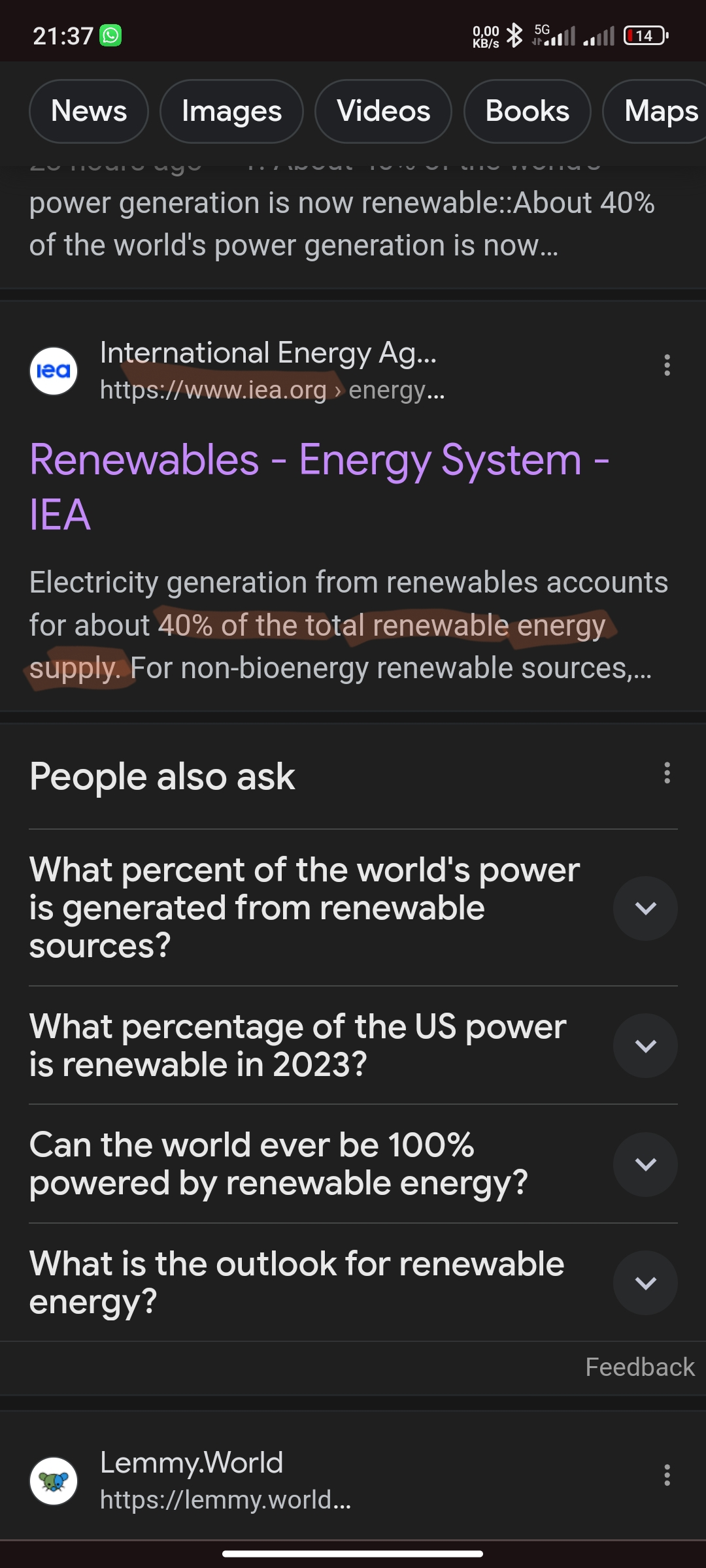.
They're measuring installed capacity, not actually generated power. Given the very low output vs theoretical maximum capacity of renewables this translates to something closer to 15% generated power, including hydroelectric.
Seems high to me too, and the lack of peer review doesn't help
FFS... They could at least fucking skim the report they are writing about. It's not 40%, it's 28%...
The total global electricity consumption, from all sources, including renewables, was 28 500 TWh in 2022, a 2.5% increase compared with 2021 (and a 25% increase compared with ten years earlier, 2013) (EMBER, 2023). According to IRENA (2023b) the percentage of electricity consumption met by RE was 27.8% in 2022, up from 27.6% in 2021. According to the International Energy Agency (IEA) (2023), demand is expected to grow by slightly less than 2% in 2023.
I couldn't find any related 40% in the report pdf. However there is a difference between fraction of capacity, and fraction of consumption - not all capacity is used, maybe that explains some of the gap?
I found where it comes from

Green - An environmentalist community
This is the place to discuss environmentalism, preservation, direct action and anything related to it!
RULES:
1- Remember the human
2- Link posts should come from a reputable source
3- All opinions are allowed but discussion must be in good faith
Related communities:
- /c/collapse
- /c/antreefa
- /c/gardening
- /c/eco_socialism@lemmygrad.ml
- /c/biology
- /c/criseciv
- /c/eco
- /c/environment@beehaw.org
- SLRPNK
Unofficial Chat rooms: